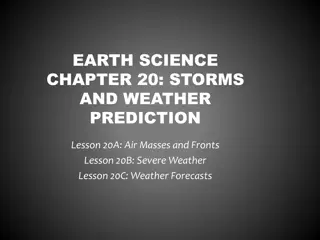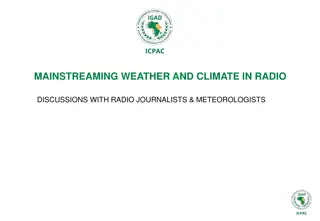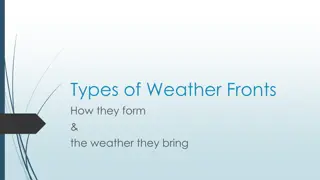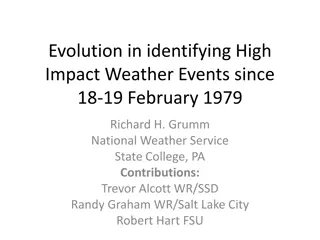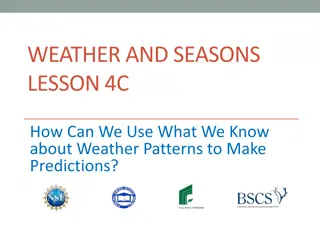
Mountain Weather Safety Tips
Learn essential mountain weather safety tips to prepare for changing conditions while hiking or climbing. Be prepared for rain, wind, snow, and thunderstorms with proper gear and precautions. Understand the forces that create weather and how to stay safe during thunder and lightning storms in the mountains.
Download Presentation

Please find below an Image/Link to download the presentation.
The content on the website is provided AS IS for your information and personal use only. It may not be sold, licensed, or shared on other websites without obtaining consent from the author. If you encounter any issues during the download, it is possible that the publisher has removed the file from their server.
You are allowed to download the files provided on this website for personal or commercial use, subject to the condition that they are used lawfully. All files are the property of their respective owners.
The content on the website is provided AS IS for your information and personal use only. It may not be sold, licensed, or shared on other websites without obtaining consent from the author.
E N D
Presentation Transcript
Mountain Weather Freedom of the Hills Chapter 27
Weather Basics Mountain weather can change rapidly!! Weather is an objective hazard; you have NO control In winter, temperatures can drop 40 or more the instant the sun sets HOW you prepare to deal with changing weather is a subjective hazard; you DO have control
Be Prepared BE prepared to function in any weather: Rain Wind Snow Thunderstorms Carry protective gear and clothing layers Bivy sack in Summer that is weatherproof to keep you dry Tent in Winter that can withstand heavy snow and high winds Clothing that protects you from wind and rain
Forces that create weather Sun Air Movement Moisture Precipitation and wind are associated with both fronts, but cold fronts usually bring more severe weather
Thunder and Lightning Thunderstorms CAN and DO KILL If Thunderstorms are forecast: Obtain updated reports before hitting the trail Don t camp or climb in narrow valleys/gullies Don t climb or hike in high, exposed areas Summit early and descend by afternoon Color changed from white to dark grey/black If you can hear it, if you can see it, you are close enough to be struck!
Thunder and Lightning Use the flash to bang testto estimate storm s approach 5 seconds per mile. If you get caught in a thunderstorm Get off ridges and peaks and away from water MOVE IMMEDIATELYif your hair stands on end or you hear buzzing Seek shelter (not in tents that may become lightning rods) Crouch to minimize your height and cover your head and ears Insulate yourself from the ground (sit on pack or foam pad) Do not lie down (minimize contact with ground) Do NOT get under lone trees or lookout points. Look for a stand of even height trees.
Mountain Winds Understand localized patterns Gap Winds - Winds between peaks and passes can blow twice as fast as surrounding wind Valley & Gravity winds Typically blow uphill during the day and downhill during the night Chinook Winds High downhill winds, heated by rapid compression, increases avalanche and flood hazards
Field Forecasting Predicting changes in the weather pattern Major indicators of approaching storm are changes in: Cloud cover Wind direction Wind speed Air pressure
Weather Briefings Create your own weather report Seek input from weather forecasts, websites, locals Be sure to check surrounding areas! Watch the weather pattern daily for several days prior to a planned trip

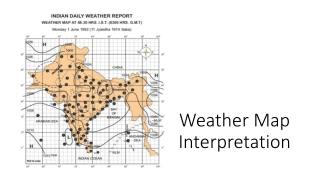

![[PDF READ ONLINE] Mountain Claiming (BIG-Secrets of Mountain Men Book 3)](/thumb/42287/pdf-read-online-mountain-claiming-big-secrets-of-mountain-men-book-3.jpg)

